A car fitted with a satellite on the roof is enhancing the health care being delivered in the most remote area of Hawke’s Bay.
In Wairoa, Health New Zealand | Te Whatu Ora kaimahi like district nurses, midwives, and physios travel long distances across remote, back country roads to visit patients. Until recently this meant working long periods out of mobile coverage – making the job much harder.
The installation of a Starlink satellite on top of a Toyota RAV4 has removed all mobile black spots. It’s providing mobile and internet coverage to previously unconnected areas.
It’s been a game changer for Nerys Williams, Wairoa Rural Nurse Specialist and Prescriber. High-speed internet connectivity goes everywhere she does.
“I now have access to key patient data while I’m out and about. It means I can double check a child’s immunisation record, download a patient’s latest blood test results or x-ray and change appointments in the system,” she says.
Starlink sends a signal to a satellite in space and comes back, at up to 425Mbit/sec. In comparison, people with fibre at home typically get download speeds of 300Mbit/sec.
Sym Gardiner, Data and Digital Lead Service Improvement Analyst, says Starlink is a key tool for clinicians who work in remote places.
“It allows clinicians to access any system available in the hospital, no matter what the cell coverage is like in the area they’re working. They can even access clinical records if the power goes out.
“This is enabling our healthcare kaimahi to do their job no matter where they are.”
“The high-speed internet allows clinicians to download big patient studies such as cardiac ultrasounds, which is essentially a video recording looking at the structure of the heart and can contain up to 160 images.
“Clinicians can access these images and recordings just as quickly – sometimes even faster – than if they were working at the hospital. This is enabling our healthcare kaimahi to do their job no matter where they are.”
Sym demonstrated this by logging on to a Teams video call in Tuai, a small township 45 minutes inland from Wairoa, and chatted to clinicians in Hastings. Normally cellphone coverage would be patchy at best.
Starlink is powered by a power box in the boot of the car which charges while driving. Once stopped, it has about eight hours of power. An internal aerial provides internet coverage to those inside the car while an external aerial creates a Wi-Fi bubble with 50-60 metre range.
It means clinicians like Nerys can use their laptop and phone inside a patient’s home, while the car is parked outside.
While visiting a patient in Tuai, Nerys was able to record his blood pressure and change his next specialist appointment to a time that was better suited.
Nerys says not only does it give her better oversight of clinical records, it saves her time at the end of the day.
“I’m far more productive. Now I can enter data and notes straight into the system rather that having to take written notes and re-enter the information at the end of the day.”
Mark-Shane Tuuta-Rurehe says he’s fortuntate Nerys is able to call in and do her checks as he relies on a carer to drive him into Wairoa and back – about a two-and-a-half hour round trip.
“Nerys’s visits really help, otherwise I’d be back and forth to Wairoa and it cuts into my time with my carer,” he says.
Sym says the Hawke’s Bay Data and Digital team had been working on a way of connecting remote workers for the past few years and then Cyclone Gabrielle highlighted the need for this technology.
“The Starlink helps our rural kaimahi in their day-to-day delivery of health care and it has enough “oomf” for an office of about 20 people to run off.
“If we have another cyclone, where both ends of the fibre are cut, Wairoa’s got nothing. We’re not going to let that happen again. Starlink means staff can still make calls and log on to our private network to access the systems they need,” Gardiner says.
“Satellite connectivity is a key enabler. In emergencies you can set up a mobile emergency centre clinic from anywhere with full communication and health information capability.
“It’s enhancing the care we deliver and making us more resilient, should another natural disaster occur.”
ENDS
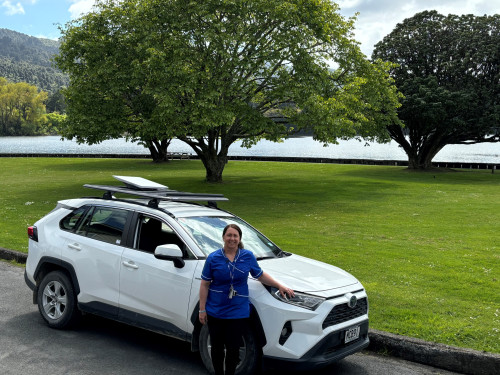
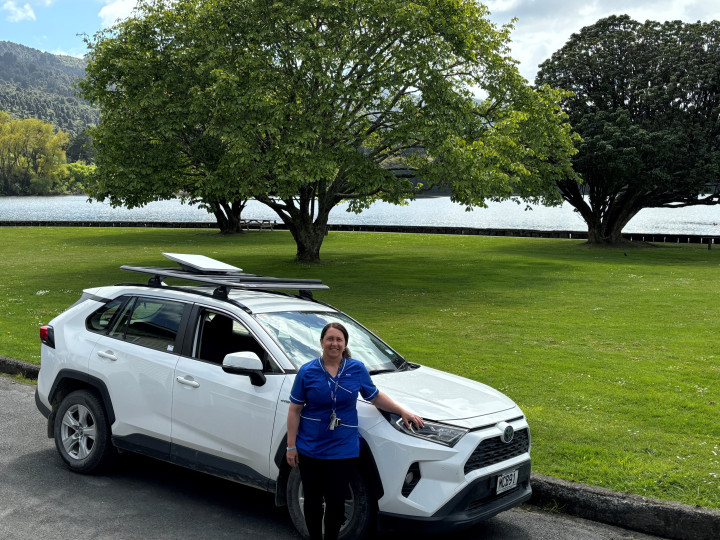
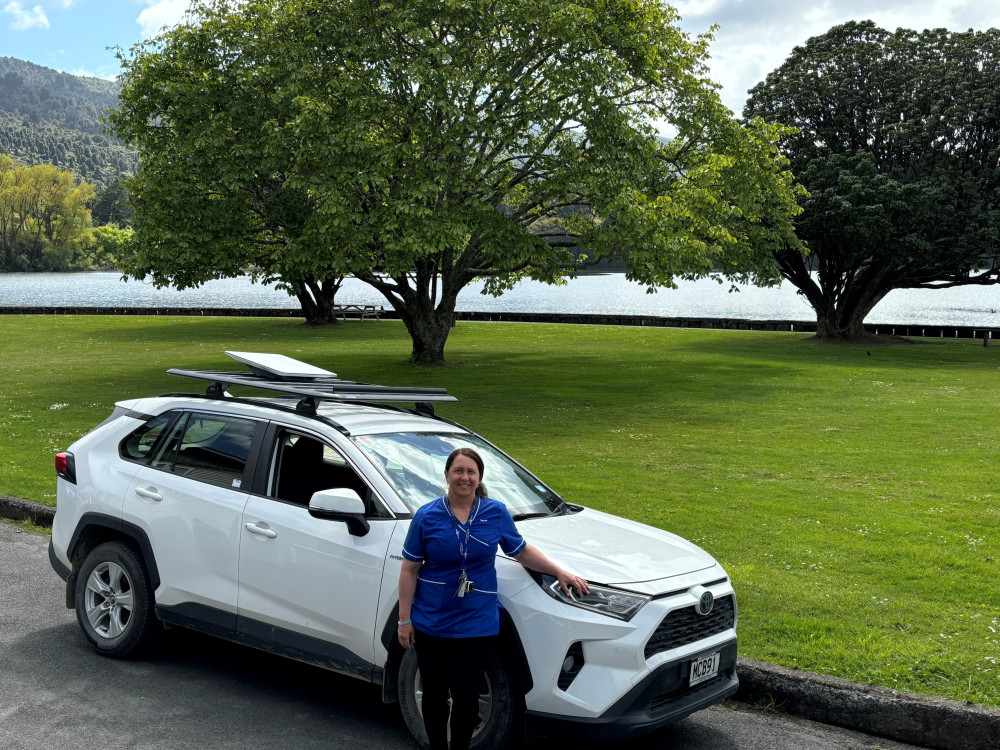
Photo above: Nerys Williams, Wairoa Rural Nurse Specialist and Prescriber with the Starlink car.
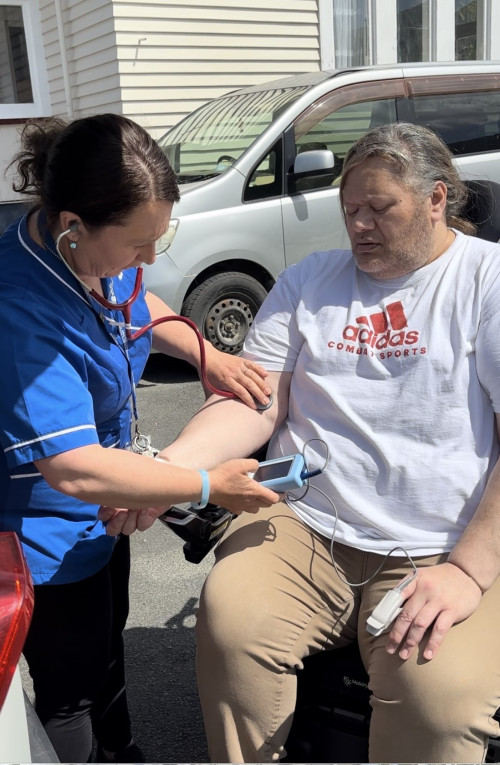
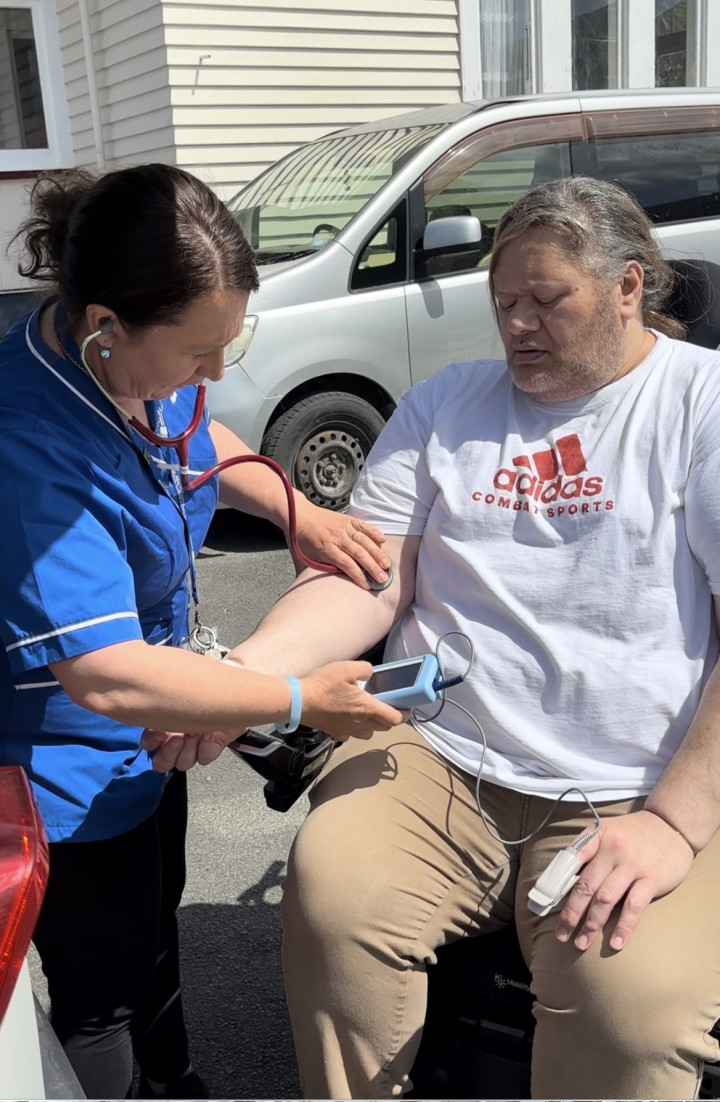
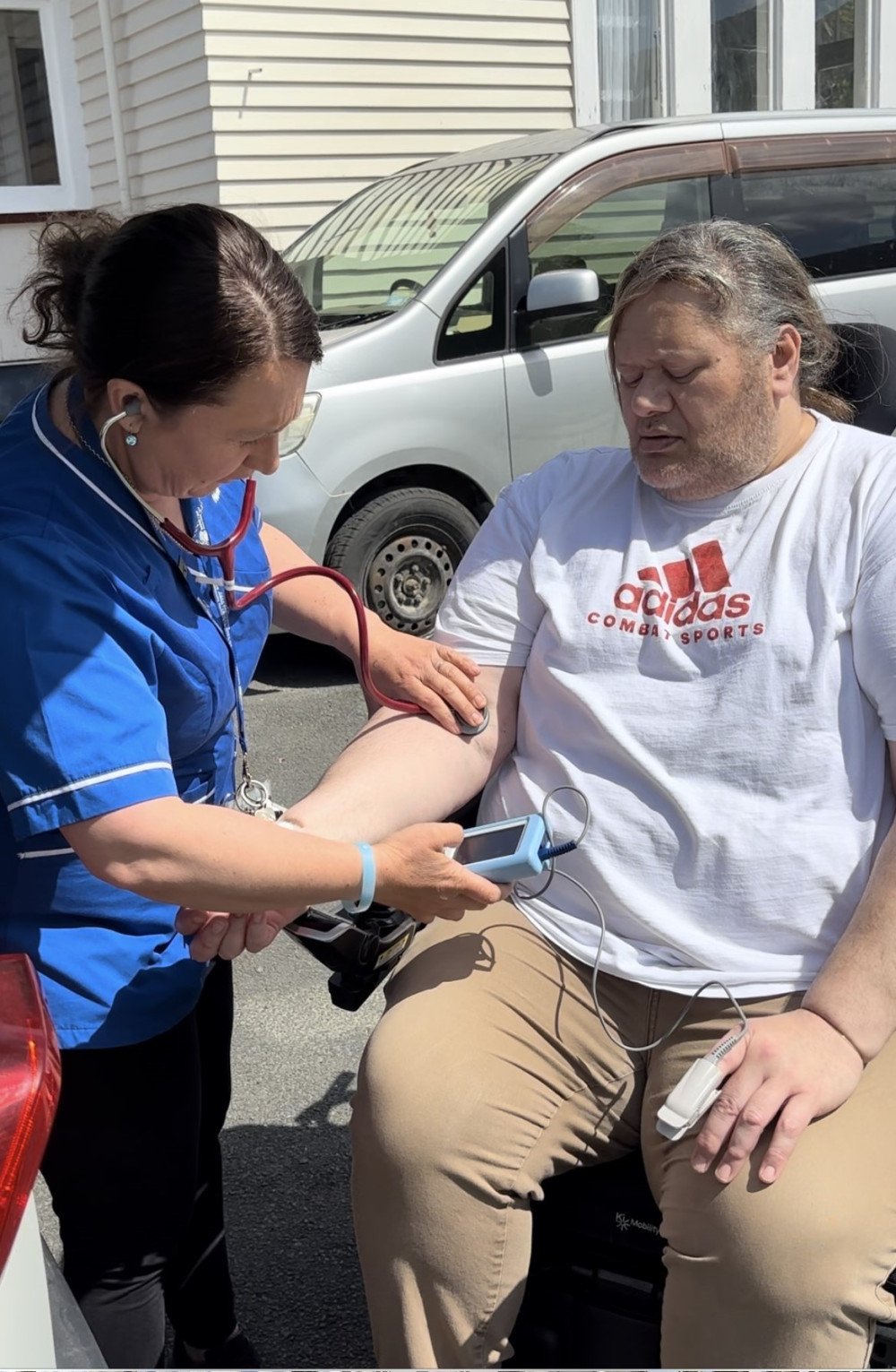
Photo above: Nerys Williams with patient Mark-Shane Tuuta-Rurehe